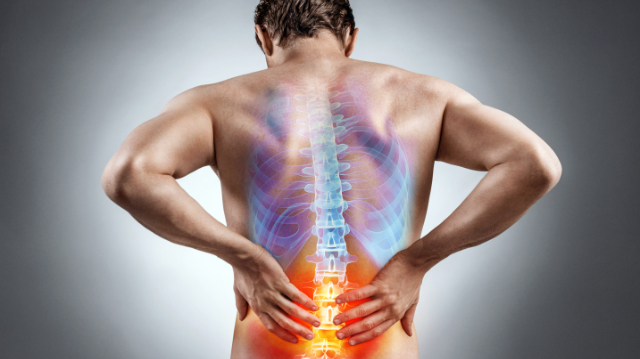
The anatomy of your spine is rather remarkable. Its complex design includes a combination of strong bones, large muscles, and flexible ligaments and tendons, which are all interconnected in a manner that provides both extreme durability and flexibility. This means the spine is strong and sturdy—so it can support the rest of the body and protect the structures within it—but is also highly flexible, allowing for mobility in several directions. These two characteristics are defining features of the spine, and they show that it’s far more resilient than one might think.
Below, we break down the primary structures of the spine—particularly in the lower spine—responsible for these characteristics:
Vertebrae
- The spine is made up of 33 bones called vertebrae (singular vertebra), which are stacked together and interlocked to form the spinal column
- Only the top 24 bones are moveable—those of the sacrum and coccyx at the base of the spine are fused—and these vertebrae are numbered and divided into three groups:
- Cervical (upper back) region
- Thoracic (mid-back) region
- Lumbar (lower back) region
- The lumbar region consists of five vertebrae (L1-L5), which are much larger than the bones above it and progressively increase in size going downwards; the function of these bones is to support the weight of the body, and their size allows them to absorb the stress of lifting and carrying heavy objects
Facet joints
- These vertebrae are connected in the back of the spine with a small pair of joints called facet joints
- They add to the spine’s stability and allow the spine to move in several directions
- The facet joints of the lumbar spine are more flexible than those of the cervical and thoracic spine, and they make side—to—side movements easier to perform
Intervertebral discs
- In between each vertebra is a structure called an intervertebral disc
- These discs consist of a tough outer portion (annulus fibrosus) made up of collagen fibers that surrounds a soft inner core (nucleus pulposus), which is filled with a jelly-like substance
- The purpose of the discs is to absorb shock, hold the vertebrae together and prevent them from rubbing against one another during movement
Muscles
The lower back also consists of a large and complex group of muscles that work together to support the spine, help the body remain upright, and allow the trunk and body to move, twist, and bend in several directions. The three main types of muscles in the lower spine that help with these functions are the following:
- Extensor muscles: these muscles attach to the back of the spine and allow you to stand and lift objects; they include the erector spinae, which is a large pair of muscles that that helps to hold up the spine
- Flexor muscles: these muscles attach to the front of the spine and allow you to bend forward, flex, lift, and arch the lower back
- Oblique muscles: these muscles attach to the side of the spine and help to rotate the spine and maintain proper posture
Collectively, these structures help to make the spine one of the sturdiest structures in the body, while also permitting an extensive range of motion. Unfortunately, pain is the lower back is extremely common, but as we’ll explain in our next newsletter it usually doesn’t mean there is necessarily anything wrong with the spine.
